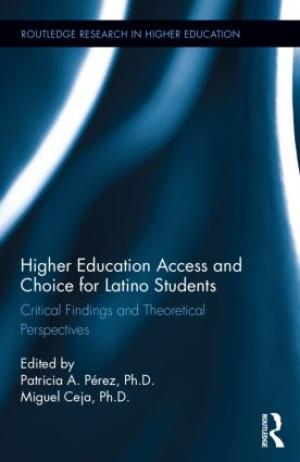Resources

Click Here for Book Review
This essay is part of a collection of short essays solicited from authors around the globe who teach religion courses at the college level (not for professional religious training). They are published together with an introduction in Teaching Theology and Religion 18:3 (July 2015). The authors were asked to provide a brief overview of the curriculum, student learning goals, and pedagogical techniques employed in their courses.
This essay is part of a collection of short essays solicited from authors around the globe who teach religion courses at the college level (not for professional religious training). They are published together with an introduction in Teaching Theology and Religion 18:3 (July 2015). The authors were asked to provide a brief overview of the curriculum, student learning goals, and pedagogical techniques employed in their courses.
This essay is part of a collection of short essays solicited from authors around the globe who teach religion courses at the college level (not for professional religious training). They are published together with an introduction in Teaching Theology and Religion 18:3 (July 2015). The authors were asked to provide a brief overview of the curriculum, student learning goals, and pedagogical techniques employed in their courses.
This essay is part of a collection of short essays solicited from authors around the globe who teach religion courses at the college level (not for professional religious training). They are published together with an introduction in Teaching Theology and Religion 18:3 (July 2015). The authors were asked to provide a brief overview of the curriculum, student learning goals, and pedagogical techniques employed in their courses.
This essay is part of a collection of short essays solicited from authors around the globe who teach religion courses at the college level (not for professional religious training). They are published together with an introduction in Teaching Theology and Religion 18:3 (July 2015). The authors were asked to provide a brief overview of the curriculum, student learning goals, and pedagogical techniques employed in their courses.
This essay is part of a collection of short essays solicited from authors around the globe who teach religion courses at the college level (not for professional religious training). They are published together with an introduction in Teaching Theology and Religion 18:3 (July 2015). The authors were asked to provide a brief overview of the curriculum, student learning goals, and pedagogical techniques employed in their courses.
This essay is part of a collection of short essays solicited from authors around the globe who teach religion courses at the college level (not for professional religious training). They are published together with an introduction in Teaching Theology and Religion 18:3 (July 2015). The authors were asked to provide a brief overview of the curriculum, student learning goals, and pedagogical techniques employed in their courses.
This essay is part of a collection of short essays solicited from authors around the globe who teach religion courses at the college level (not for professional religious training). They are published together with an introduction in Teaching Theology and Religion 18:3 (July 2015). The authors were asked to provide a brief overview of the curriculum, student learning goals, and pedagogical techniques employed in their courses. Wendy Wiseman taught Humanities courses at Ozyegin University in Istanbul from 2008-2013, taught Religious Studies at Indiana University the following year, and returned to Istanbul to teach at Beykent University. Burak Kesgin is Chair of Sociology at Beykent University, with a focus on political economy and sociology of religion.
This essay introduces a collection of short essays solicited from authors around the globe who teach religion courses at the college level (not for professional religious training). The central question uniting this collection is whether religious studies is a unified and global pedagogical field, and this introduction teases out salient continuities and discontinuities driven by broad cultural and political contexts. These essays are published together with this introduction in Teaching Theology and Religion 18:3 (July 2015). The authors were asked to provide a brief overview of the curriculum, student learning goals, and pedagogical techniques employed in their courses.